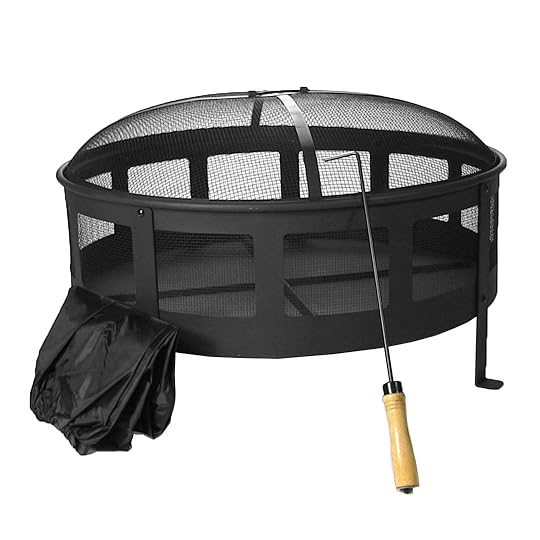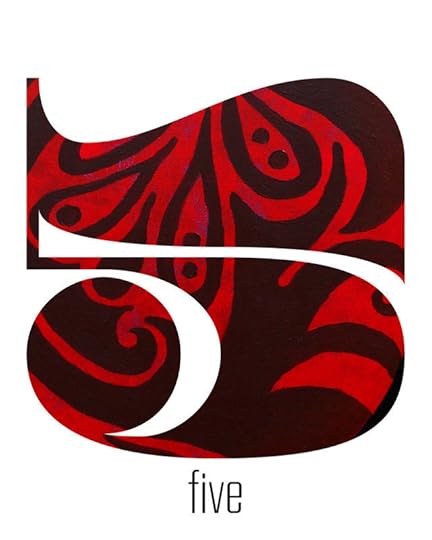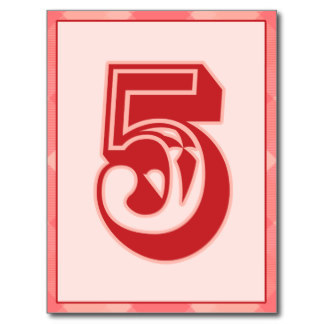Josh Kilmer-Purcell's Blog, page 47
October 1, 2014
Whimsical Wendy







<
>
There must be something in the water ’round here. Everyone seems to be fabulous in one way or another.
Meet our neighbor, artist Wendy Costa, and enter into her wonderfully whimsical world.
How long have you been doing what you are doing?
I have been in business since 1987 when I began my adventure into handmade and American made art and design when I was just 24. I have been designing and selling my art for 27 years. I am truly living my childhood dream. Against all odds with this recession, I am able to have a retail store with the incredible help and love and support from Doug and Garth from the American Hotel.
How long have you lived in the Sharon Springs area and what do you love most about it?
I came up to Sharon Springs in 2009 looking for property when the recession hit and we wanted to buy something smaller that we could love and restore and use for our studio and home. Even though I lived most of my life in Berne, NY, I never heard of or visited Sharon Springs. I was thrilled! I found my old Methodist church and parsonage just 25 minutes from Sharon, but I wanted to be part of the chamber and business community there right away.
What is the single thing that you look to on a daily basis for inspiration?
Everyday I am inspired by my opportunity to be self-employed as a woman. My neighbors pitch in during our busy fall season and help with my production, make me meals when I am too busy to cook, and I will never leave this area. My heart is here. The buildings with their history, the people with their slower pace of life and willingness to lend a hand, and the ever changing landscape of color from the seasons inspire me. I am close to the greatest city in the world for art, a hop and skip to Montreal, Boston, Philadelphia and some of the very best markets for selling handmade.
How much longer will your have your pop-up shop on Main Street in Sharon Springs?
My busy season for shows starts October through December, so I will be traveling selling my work until December and I will keep the shop closed. I will re-open in the spring (I think April) with a new plan for my little Klinkhart space as I dream of adding a tea room and larger floor plan, a new line of tights and scarves and a sculptural line I am working on that happened by chance with a customer who visited Sharon Springs and my studio, and that friendship has led to a new line for me and a new direction that I’m thrilled about. I had a great success in Sharon Springs this summer and cannot wait to be back in the spring!
To see more of Wendy’s work click here, and be on the look out for an exclusive collaboration with Beekman 1802 this holiday season!
September 23, 2014
Home Fires Burning
Our favorite thing about autumn is the crunch of fallen leaves and the faint scent of wood smoke in the air. To celebrate the arrival of the new season at Beekman 1802, our friends at Serenity Health, are giving away this beautiful iron fire pit.
Imagine the glow! Imagine the entertaining! Imagine the s’mores!!!
To enter, simply tell us the ONE thing you love most about Autumn in the comments section below. The winner will be selected using a random number generator.
September 17, 2014
Five Beautiful Things
Black & Gold
A gold necklace against a black dress. Brass buckles on black boots. The combination of black and gold has always caught my eye. There is something infinitely elegant about this simple pairing; it exemplifies luxury and drama – effortlessly. In interior spaces, using black and gold requires a bit of chutzpah, to be sure, but the effect can be as subtle or as glamorous as you want it to be. It just depends on how high you want to turn up the volume. The five images below reveal the charm of black & gold in varying degrees of drama.
Autumn is the perfect season to start experimenting with color indoors. If you’re thinking about using a bold, contrasting palette like black and gold, it’s best to start in a small space, such as a powder room or study, before expanding to a larger space. If you end up hating it, you don’t have much to correct. What are some of your favorite color pairings? Do you like the quiet classicism of white and blue: nautical, French, pastoral? Or do you prefer something bolder like green and pink? (Believe it or not, green and pink look amazing together!) Share your thoughts in the comments section below.
September 11, 2014
Vintage Kitchen Gadgets

Photograph by adammilliron.com
Jodi Hilliard is the official buyer for the Beekman 1802 Vintage Collection. She shares regular posts about her finds and using them in your lifestyle.
I love, love, love vintage kitchen gadgets—in my opinion, you can never have too many! When out picking, I’m always on the lookout for cool old kitchen tools to add to the Beekman 1802 Vintage Collection.
Retro kitchenware is normally quite sturdy and obviously able to stand the test of time since pieces were made with materials such as stainless steel and aluminum in all American cities like Burlington, VT (Edlund) and Minneapolis, MN (Foley). Some even seem indestructible! I also enjoy the colorful wooden handles that are featured on a lot of the gadgets like the red ones on the Bromwell’s 5 Cup Sifter and the Edlund Hand Mixer in this assemblage. Not only do they look great, they work well too!
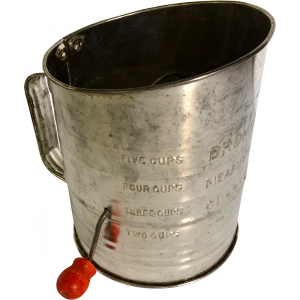
Bromwell’s 5 Cup Sifter
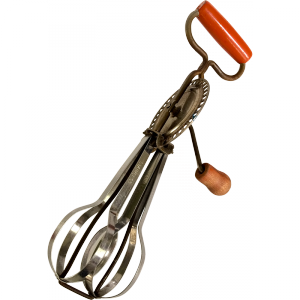
Edlund Hand Mixer
Pictured below are a few pieces from my personal kitchen gadget collection that I use quite often. The pastry cutter is a must for making my nearly famous Vanilla Bean Scones, the dual pairing knife/peeler always comes in handy when prepping veggies, the ice cream scooper is a hit in the summer and the awesome-ly retro clown wine bottle opener was my Nana’s (although I never saw her drink wine?). Each piece works as well for me now as the day it was first made.
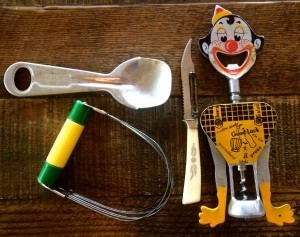
My personal fav’s
Hopefully you’re now inspired to hit the kitchen, breakout your favorite Beekman 1802 Cookbook and whip up a yummy heirloom recipe with the help of vintage kitchen gadgets. Be sure to check out the vintage items now available for sale in the Beekman 1802 Vintage Collection before they’re gobbled up!
Vintagely yours,
Jodi
September 10, 2014
Five Beautiful Things
Embracing Eclecticism
Learning to live with the things you love should not be as daunting as it is. We have been conditioned over the years to adhere to decorating trends and to follow them religiously in our homes: “don’t put these two colors together; don’t mix patterns; that’s so last year.” Thankfully, I work in a creative environment that nurtures eclectic design and style, which I believe is beautiful, if only by virtue of the individualistic approach it encourages in those that employ it at home.
This post was inspired by my friend April Walsh and her family, who recently won a magazine contest, which afforded them a full kitchen makeover from Ikea. Their style is the perfect representation of what eclecticism means to a young family: the mixing of treasured objects (old, new, upcycled and repurposed) with functional, modern appliances and surfaces. Click here to see the video of their new kitchen!
Below are five images that also represent this style beautifully. While there are no real rules to making this style work, there are some simple guidelines that might be helpful. Notice that the rooms are bright and airy with a neutral base. This helps makes the treasured objects and unique design statements shine while also keeping them grounded. It keeps the rooms looking modern, not kitschy. The rooms are curated, not cluttered, and textures are overlapped and paired unexpectedly to create visual interest but are not overwhelming the space. The real key is editing.
So, go ahead: take out that collection of vintage salt-&-pepper shakers and put them on display. Use your imagination and dare to be free-spirited. It’s your home, after all.
Click here to see more images like this.
Tell us about YOUR style in the comments section below
September 7, 2014
The TePee
U.S. Route 20 is the longest highway in America, spanning 3365 miles from Boston to Newport, Oregon. (the “0″ in it’s number signifies that it is a coast-to-coast highway). As a main thoroughfare in the 1950′s, all types of roadside attractions sprang up along the route to lure people out of their automobiles.
One such landmark sits right outside of Sharon Springs.
The Tepee is on the National Registry for Historic Places and has been in the same family for 2 generations. It sells Native American crafts (Brent buys a pair of Minnetonka bedroom shoes here each winter), works by local artists, and still maintains a little of the road-side souvenir kitschy that we are all so nostalgic of.
Take a photo tour with us:





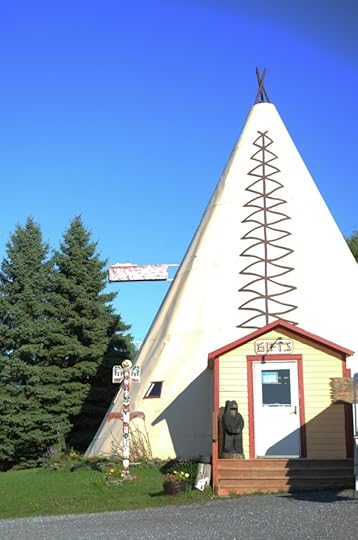




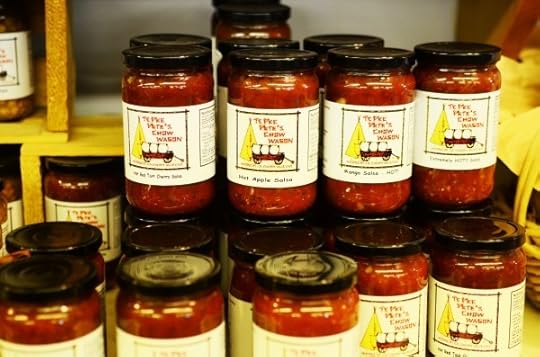




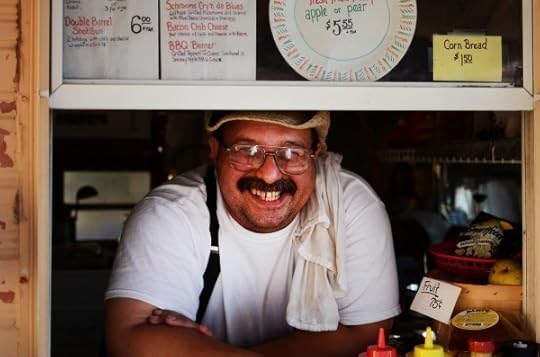







<
>
Do you have any memories of road side attractions? Share them in the comments section below!
Check out The TePee on your next visit to Sharon Springs!
September 3, 2014
Five Beautiful Things
Having Twins
I’m not ashamed to admit that I slept in a twin bed until I was 28 years old. It was by choice as much as by necessity, actually. Space in my bachelor apartment did not allow for a double or a queen, but I have a feeling that I would have opted for a twin bed even if it did. If I’m not sleeping with my significant other, I prefer the cozy confines of a twin bed to the enveloping grandeur of a queen or a king. I’ve told Brent, in fact, that my favorite bedroom in the Beekman is the small one at the back of the house, which has a twin bed and a beautiful vintage bedspread. Guest bedrooms, too, are often best outfitted with a pair of twin beds. They are perfect if you are hosting a brother and sister, a mother and daughter or a father and son. I’ve always loved the look of a set of twin beds in a guest room: symmetrical and orderly but still inviting. Below are five bedrooms that have been beautifully set up with a pair of twin beds. Get cozy!
August 27, 2014
The Lost Arts
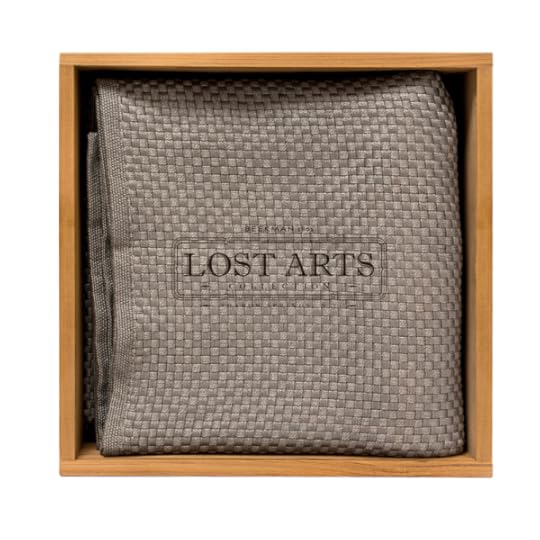 Each year, Beekman 1802 chooses one artisan that exemplifies the very best of American craftsmanship and commissions them to create an exclusive limited edition piece. It’s our way of helping you rediscover these Lost Arts.
Each year, Beekman 1802 chooses one artisan that exemplifies the very best of American craftsmanship and commissions them to create an exclusive limited edition piece. It’s our way of helping you rediscover these Lost Arts.
Our Lost Arts Thistle Hill Throw is the work of Rabbit Goody,one of the finest textile designers and weavers in the world today. It is hand-woven from mercerized cotton using an ancient basket weave technique for uniquely beautiful luster, texture and softness. For us, it is an instant heirloom.
Rabbit says:
The blanket is an ancient design replicating the baskets of ancient civilizations and representing some of the earliest cloth weaving. No other throw made in the world currently uses this technique which produces a soft finish but hefty throw that will last a life time. Each throw is individually woven one at a time so no two are exactly alike and each is hand-finished.
Beekman 1802 has worked with Rabbit Goody for many years (including our signature Beekman stripe scarf), and we are thrilled to have her as part of our B. 1802 Rural Artisan Collective.
The Lost Arts Thistle Hill Throw is the debut piece in our Lost Arts Collection, and the first of many distinctive items in the line that we will cherish in our own home. We hope you will do the same in yours.
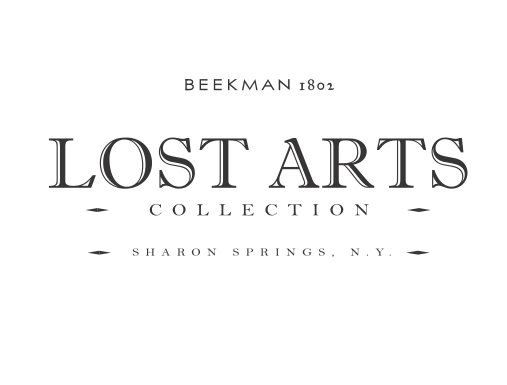



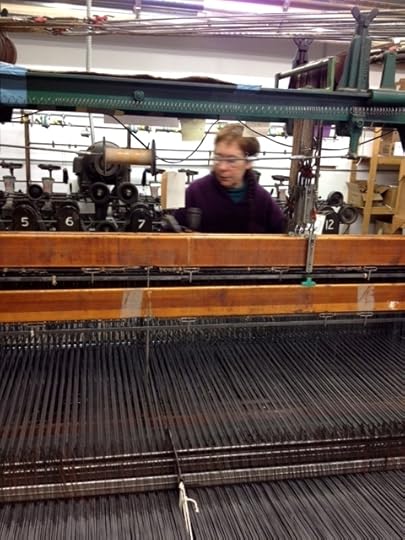

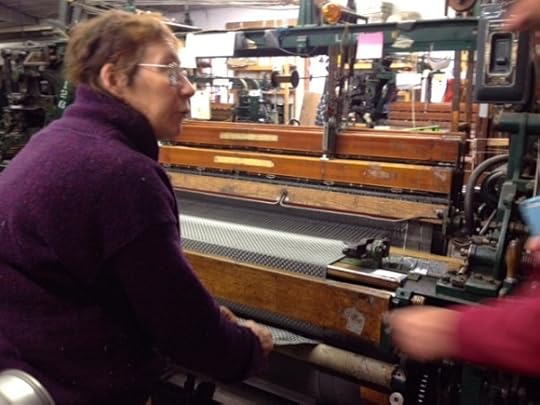
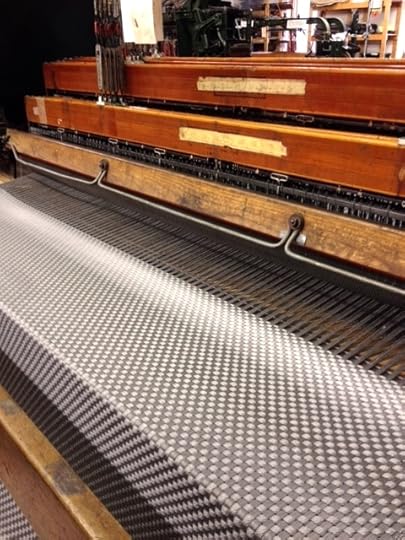



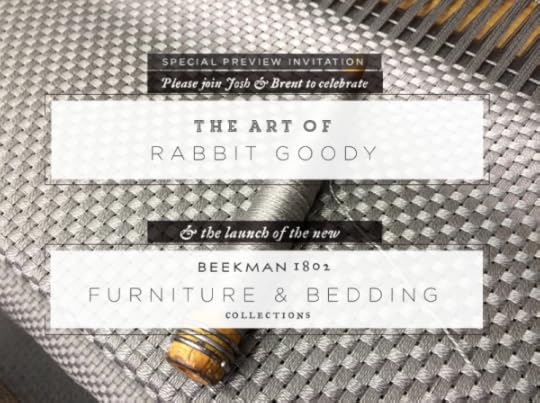

<
>
To bring this heirloom blanket into your own family’s home, look in the Beekman 1802 online Mercantile. Click here
Five Beautiful Things
Check, Please!
Some of my colleagues think I must own stock in a mysterious gingham-manufacturing company abroad. I love the summery/autumnal check pattern and have a dozen or so shirts in this printed fabric: short-sleeve, long-sleeve, red, blue, black, green, teal… You get the picture. The name ‘gingham’ comes from the Malay word genggang, which means striped – its original incarnation. When it was imported into Europe in the 1600s, manufacturers gradually began to print the medium-weight, plain-woven fabric in check, often in blue on white, its most popular pairing. Gingham is made of carded, medium or fine yarns, where the colouring is on the warp yarns and always along the grain, the weft.
With Labor Day approaching, there is no better time to break out the gingham, in my opinion: picnic blankets, napkins, aprons and baskets lined with gingham are all perfectly festive. Few, however, dare to incorporate gingham into home décor. Perhaps they fear the commitment to such a striking pattern, or perhaps there are confused associations with kitschy Italian diners. Whatever the case, it seems a shame to me that it is so frequently neglected as an interior design element. Below are five images that hopefully prove how attractive gingham can be indoors.
August 26, 2014
We’ve Got You Covered
One of the things that thwarts a lot DIY home projects is that people don’t know how to do something and are afraid to ask for help. This becomes especially true when the knowledge gap between the novice and the expert is larger. People get embarrassed if they don’t know the right questions to ask.
When we were designing the Beekman 1802 furniture collection, we had no hesitancy at all in finding the experts to make sure that we were creating truly heirloom pieces.
We turned to the wonderfully informative book written by our Sharon Springs neighbor, David
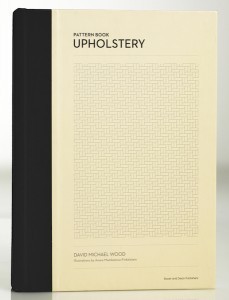
This book is so essential that even Martha Stewart has a copy!
Upholsterer’s Notes
By Jody Xuereb
The word upholsterer is defined as someone who applies webbing, springs, padding, and fabric to a furniture frame. Not many upholsterers are knowledgeable in the process or art of designing and building the frame they are about to work on, yet someone in the custom upholstered furniture trade must be knowledgeable in both aspects in order to create good furniture.
Custom upholstered furniture is commissioned by the decorator or the client and results in a piece of furniture that is one of a kind. It is imperative that the designer and upholsterer work closely together on custom pieces. All aspects of the design process and the construction are guided by the needs of the client, the vision of the designer, and the expertise of the upholsterer. The challenge of building custom furniture is that the upholsterer rarely has the luxury of building and fine-tuning a prototype model first. The model built will be the one the client receives.
The process begins with the architecture of the frame, which will define the shape and determine the comfort of that piece of furniture. The frame is the foundation and must be correct from the start.
Custom upholstery construction hasn’t changed significantly in the last 200 years. The process still involves skilled handwork that takes many years to hone, and a successful workroom needs a skilled team who understands how to finesse the form. A good upholsterer knows what the piece will look like, and how comfortable it will be, before a single piece of material is applied to the frame.
The upholsterer prepares the frame for fabric by applying the webbing, springs, and hog hair. Typically, the upholsterer will rely on the cutter to tailor the fabric to the furniture. The word tailoring is rarely used when one talks about furniture, but it is what defines the piece, and is the last part of the process.
Over the years, however, the materials for construction have changed to be more cost effective. Our workroom still builds our furniture using traditional materials such as cotton batting and a blend of hog hair and synthetics. This blend closely resembles the horse or hog hair of pre-industrial age furniture construction that is no longer commonly used. All of the commercial furniture on the market today is built with polyurethane foam as padding.
Foam rubber revolutionized the furniture making process, requiring less skilled labor. Unlike hog or horse hair, which is fibrous in nature and must be hand-stitched into place, foam rubber enables the upholsterer to cover large areas very quickly. Custom upholsterers still use coil springs in the seats and backs of our furniture, which requires hand tying in place. Most commercial furniture today is built with either sinuous springs or webbing only. These changes in furniture construction mimic traditional furniture in comfort, but not quality.
Creating a piece of furniture is an artistic process. A good upholsterer is a student of the art form, and he or she must have an understanding of how furniture functions. The upholsterer must also be an architect or engineer, knowing how the pitch of the back, width of the leg, and detail on the arm can be manipulated to create the desired look and comfort.
Most upholsterers are good at one particular era or style of furniture, and it is rare that you find someone who can build in any style. With experience, a good upholsterer should start to recognize the details and measurements used by a particular furniture designer and begin to feel confident putting his or her own hand into the design process. By tweaking existing styles, an upholsterer can make a leg more feminine, a back more masculine, or simply add one’s signature style.
A good workroom can duplicate an existing piece of furniture when the client wants a piece copied. For example, a client may have inherited eight Chippendale dining chairs but they have a need for ten. Or, the clients have a historic Jean-Michel Frank sofa that they wish to make into a pair. This is an important aspect of custom upholstery.
Making a duplicate piece of furniture from a photograph is more difficult, and requires a trained eye as well as a familiarity with the furniture being copied. It is much better for the upholsterer to have access to the original.
It is also important to consider economic factors when making choices regarding upholstered furniture. Many decorators have the misperception that custom work is more expensive than high-end, trade-only showrooms, but this is frequently not the case. A custom-made piece will last a lifetime, and can be reupholstered as often as a client chooses. In contrast, commercial furniture built in the last forty years is more like disposable furniture, which is made to be used for a short period of time. From an economic standpoint, commercial furniture is not worth recovering or repairing.
Over the past twenty years that I have been building furniture there have been certain issues that come up again and again. Here is what a decorator might consider before going to a upholsterer for the first time:
Research the options before choosing an upholsterer. You want to find someone who has the knowledge, experience and perhaps most important, the temperament you can work with.
Be clear about what you want; indecision causes delays
If possible it is important to bring your client into the upholsterer’s showroom so that they can sit on different styles of furniture to determine what is most comfortable for their body type. (overall size, style of arm, back inclination, depth of the seat, and preferred filling)
Before any work has begun, always confirm that the fabric delivered to the upholsterer is in fact the fabric you have selected from the showroom
As in any profession, upholstery workrooms are not all the same, and the quality and cost varies considerably among them. There are three things to look for when shopping for furniture: proportion and scale, comfort, and tailoring. An additional thing to look for is the cleanliness and organization of the workroom, for this is always a telling sign of a good workroom.
Remember that an upholsterer often has a number of jobs lined up, so talk to them early in the process about a time table.
If you have a good workroom that delivers quality and service in a timely manner, do not abuse the relationship. If you treat every project as an emergency, you will wear out your relationship with your workroom and you will risk losing them.
Form should always follow function; that is the client’s needs. In the end, it is the client who will have to live with the furniture.
To learn more about upholstery, click here

